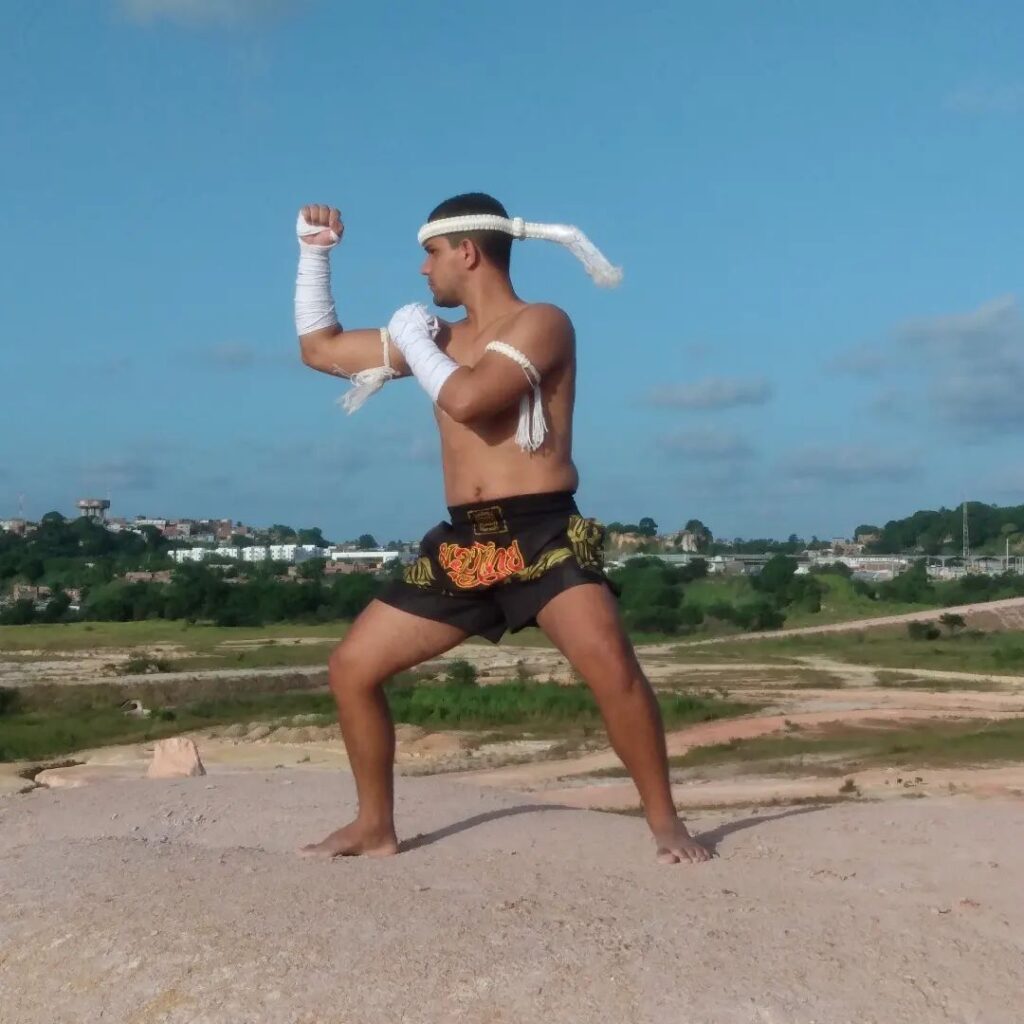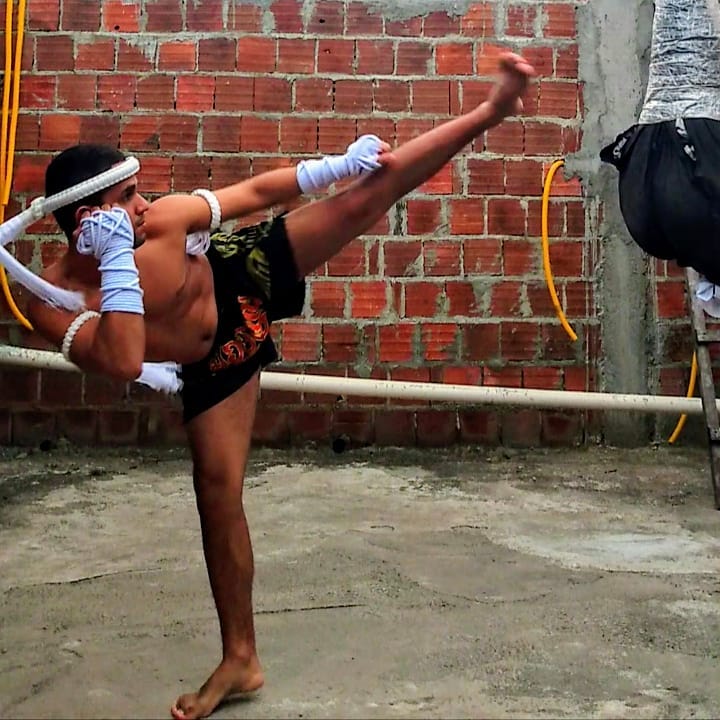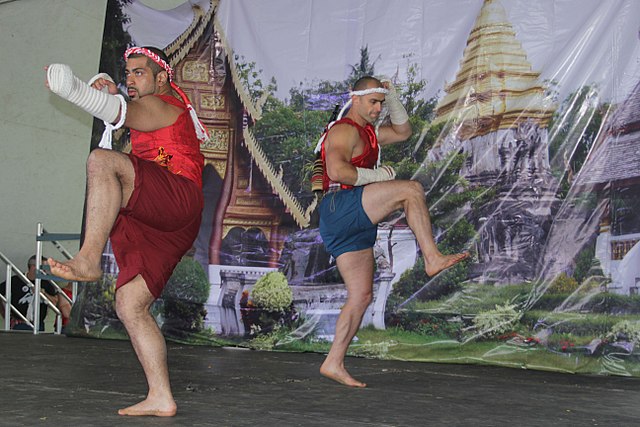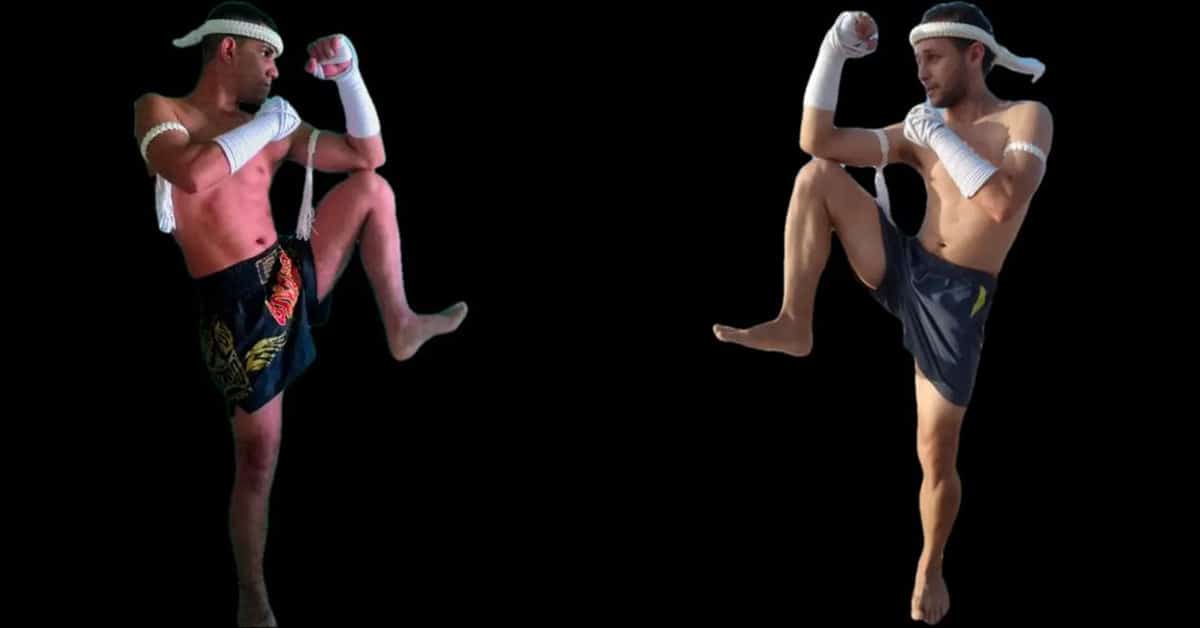Muay Tha Sao – Monkey Feet Boxing
One of the more mysterious forms of Muay Boran is Muay Tha Sao. This is an ancient martial art based in the Northern region of Thailand. Its abilities have been closely guarded as a family secret for centuries.
Muay Tha Sao, which translates to Monkey Feet Boxing, moves have only been passed down by approved family members, but this has included some extremely important people to the sovereignty of Thailand as a nation. One notable student was Phraya Phichai: The Broken Sword Legend
Muay Boran is the precursor name of martial arts in Thailand before Muay Thai became the standard for combat sports. Muay Boran has many styles based around the regions it originated from. Each one is unique in its style and rules. In the 1930s, Muay Thai became formalized with universal rules, anything prior to then was deemed Muay Boran.
What is Muay Tha Sao?
Muay Tha Sao is a distinctive Muay Boran form from North Thailand. It originated during the Ayutthaya period, approximately the 1300s, in the province of Uttaradit. Founded by Kru Mek, this style has evolved significantly over the centuries. A key figure in its development was the aforementioned Phraya Phichai.
Muay Tha Sao fighters are known for their fast kicks and versatile movement, hence the name Monkey Feet Boxing. They adapt quickly to changing conditions in a fight, maintaining high armguard positions for defense. It is focused on finishing an opponent as quickly as possible as its attacks target the weak point of the body.

Muay Tha Sao Training
Muay Tha Sao’s training regime is rigorous and selective, they don’t let just anyone attempt this. One must apply and be approved. The Muay Boran style of combat focuses on the learner’s dedication to perfecting the craft.
Banana tree kicking, which has been seen in many Muay Thai videos, is a training technique aimed at enhancing shin toughness and flexibility.
The Muay Tha Sao style includes 24 distinctive moves, divided into Mae Mais, these are advanced techniques. Plus multiple Look Mais which are simpler moves. This combination of techniques focuses on attacking the opponent’s vulnerabilities, making each move in Muay Tha Sao purposeful and effective in real combat. It is aimed at taking out an opponent with lethal accuracy.
In the Muay Tha Sao style, several key techniques exemplify its strategic and dynamic approach to combat. One notable move is the “Tai Mek” (Cloud Climbing) stance, where fighters slowly raise their fists in a circular motion, symbolizing an ascent through clouds.
Another distinctive technique is the “Nakha Sabat Hang” (Serpent Whipping its Tail). This move is executed immediately after a punch; the fighter leans back and swiftly delivers a kick. This action is reminiscent of a serpent’s quick and unexpected strike.
The “Tae Liang Bon” (High Kicking) technique involves a series of continuous high kicks aimed at the opponent’s neck. This move is especially effective against taller opponents turning their height advantage into a vulnerability.
The style’s legacy was carried by several notable practitioners, the descendants of Kru Mek, who closely guarded its secrets. Kru Toh, born in 1897, was recognized for his powerful punches and rapid kicks. Kru Plong, known as the “Fast-Footed Nak Muay,” was celebrated for having the best skills among his contemporaries. Kru Rit, with numerous victories in Bangkok, was a force to reckon with. Kru Phae was a force and proved the style’s potency. Kru Ploy, trained by Kru Plong, demonstrated exceptional agility before his untimely death at 24.
Despite its decline following Kru Plong’s death in 1979, Muay Tha Sao’s legacy endures through a small circle of dedicated teachers and practitioners. Today, Muay Tha Sao is not just a martial art but a cultural heritage, encapsulating centuries of Thai history and martial philosophy.

Muay Tha Sao Philosophy
The philosophy of Muay Tha Sao is rooted in practical combat efficiency. Unlike other styles that might focus on scoring in a match, Muay Tha Sao is about real fighting effectiveness. The style’s philosophy is uncompromising in combat, always seeking to capitalize on an opponent’s weakness or mistake to secure a quick win. This approach emphasizes strategic and decisive action.
It emphasizes mental fortitude and the resolve to persevere to the very end. Practitioners of Muay Tha Sao are expected to embody resilience and steadfastness.
Today, it is not a discipline that promotes violence for the sake of violence. Instead, it prioritizes cultivating humility, determination, and a disciplined spirit among its practitioners. Students are expected to demonstrate these virtues consistently.
Protected
Unlike many modern martial arts that are widely taught, Muay Tha Sao adheres to a more selective approach. This art form has historically been passed down within families, making it a closely guarded and familial heritage. As a result, not everyone who desires to learn Muay Tha Sao is granted the opportunity.
For outsiders who show an interest in learning Muay Tha Sao, the process involves more than just a willingness to train. Potential students must undergo a thorough assessment by a seasoned teacher.
This evaluation is not solely based on physical capabilities or potential; it delves deeply into the individual’s character. Key attributes such as attitude and determination are scrutinized. These qualities are deemed essential.
Due to these stringent requirements, Muay Tha Sao naturally attracts fewer followers compared to more widely taught martial arts. Furthermore, the advanced techniques of Muay Tha Sao. These are reserved for only a select few. The techniques embody the deeper wisdom of the art. Thus, they are imparted only to those students who have demonstrated proficiency and also a deep alignment with the core principles of Muay Tha Sao.
Wai Kru
The Wai Kru is a traditional dance done by all students of Muay Thai and Muay Boran. It is a Buddhist prayer that dates back centuries. Wai Kru’s will have unique moves depending on the fighter’s regional background and religion.
Muay Tha Sao athletes will do a Wai Kru dedicated to the Mother Earth Goddess and Lord Shiva. It involves unique moves such as a Three-Pit Walk which is where a fighter looks at the clouds and climbs a mountain.

Phraya Phichai
Phraya Phichai is a prominent historical figure in the world of Muay Thai and Muay Boran. In addition to being a hero of Siam, he is renowned for his contributions to the martial art of Muay Tha Sao. He served as King Taksin’s bodyguard during the Ayutthaya period in Thailand after leading a major victory against Burma while he was unarmed.
During a pivotal moment in Siamese history, the nation was under the rule of Burma. Phraya Phichai, a master of Muay Boran, led an attack against the Burmese. In a turn of events during battle, his two-handed sword, the daab song mue, broke, leaving him unarmed. Unfazed, Phraya Phichai resorted to his exceptional Muay Boran skills, using strikes, powerful elbows, and devastating knee attacks to overpower the Burmese forces. His remarkable victory was achieved despite being weaponless, earning him legendary status.
Panya Kraitus wrote in the book “Muay Thai: The Most Distinguished Art of Fighting” about the Muay Tha Sao hero:
“[Phraya Phichai] was the commander in chief of the army who led the common people in bravely resisting the enemy without giving thought to the possibility of his own death. For the love of his country, he pushed fiercely forward in battle until his sword broke. Throwing it down he continued the fight with his fists, knees, and elbows. Because of his knowledge of Thai boxing, he came out of the battle alive and victorious.”
Muay Boran
To understand the ancient martial art of Muay Tha Sao, one must understand Muay Boran. The term Muay Boran is traditionally used to describe the martial arts in Thailand, which eventually evolved into modern-day Muay Thai. Under the Muay Boran umbrella, there were several regional styles, each distinct to its area of origin. The primary styles included Muay Lopburi, Muay Korat, Muay Tha Sao, Muay Chaiya, and the weapons-based system Krabi Krabong.
A significant milestone in Muay Thai’s military history was during the 16th and 17th centuries when King Naresuan officially introduced it to the Siamese military. This inclusion marked the formal recognition of Muay Boran’s effectiveness in combat. This powerful combat sport was notably used in battles.
Muay Boran was also a sport that could be seen during festivals. It often would include rope wraps or bare knuckles. The rules would vary by region and would even include submissions in some forms. In the 1930s, the rules became standardized as Muay Thai with gloves, rings, and rounds.
Final Thoughts on Monkey Feet Boxing
The techniques of Muay Tha Sao have been passed down through generations of selected family members. It has been instrumental in shaping the nation’s history, with legendary figures like Phraya Phichai. This martial art is steeped in centuries of family lineage. Plus, has contributed significantly to Thailand’s cultural heritage.
As a distinct form of Muay Boran, Muay Tha Sao has created its niche with techniques and philosophies. Differentiating it from other regional styles of Muay Boran and today’s Muay Thai. The legacy of Muay Tha Sao, despite facing decline, continues to be preserved by dedicated teachers and practitioners who uphold its values and techniques.

